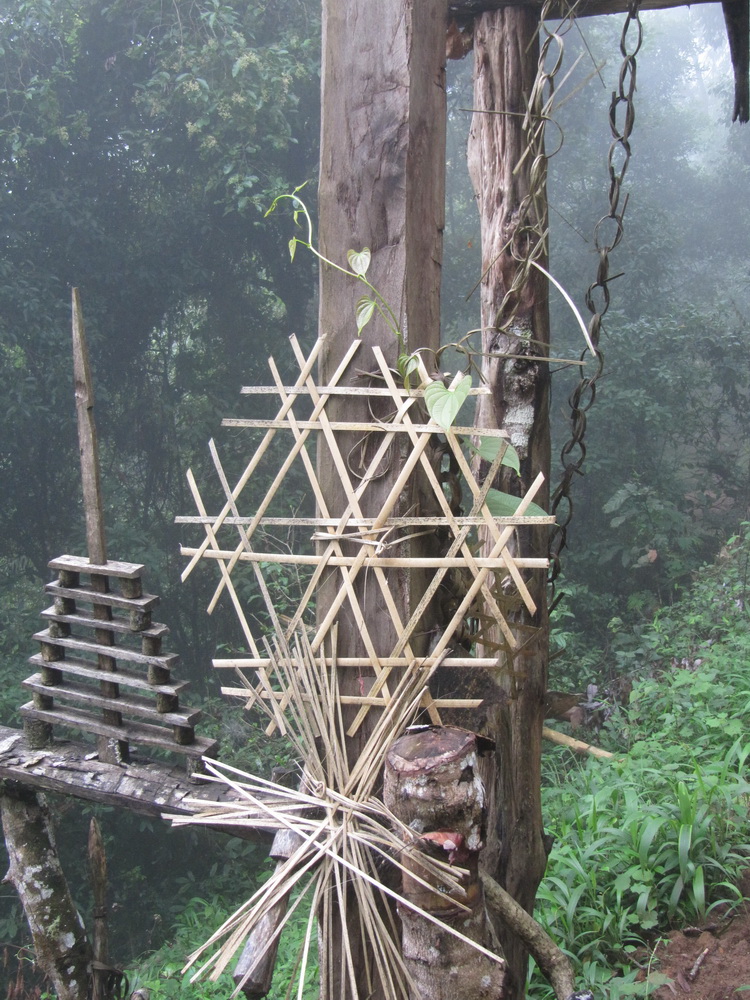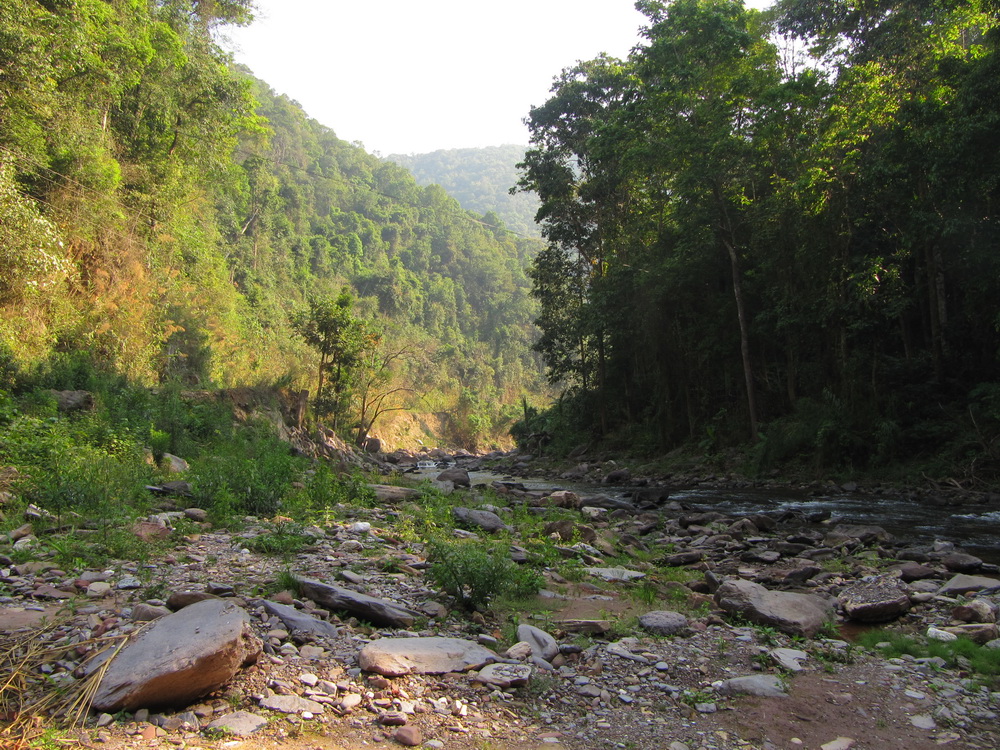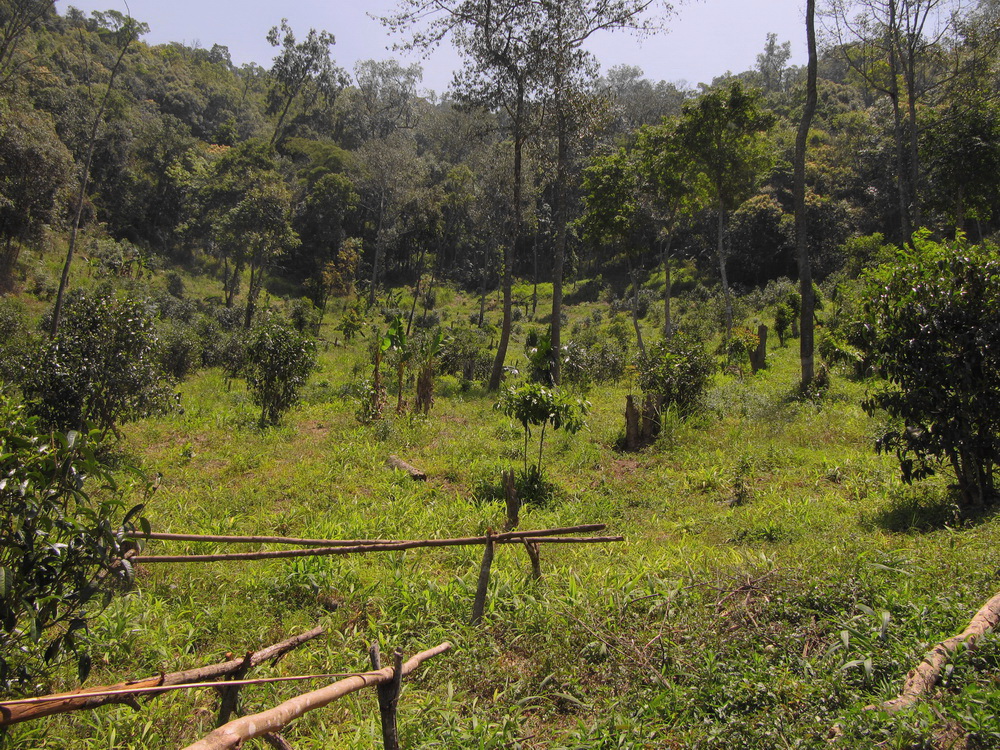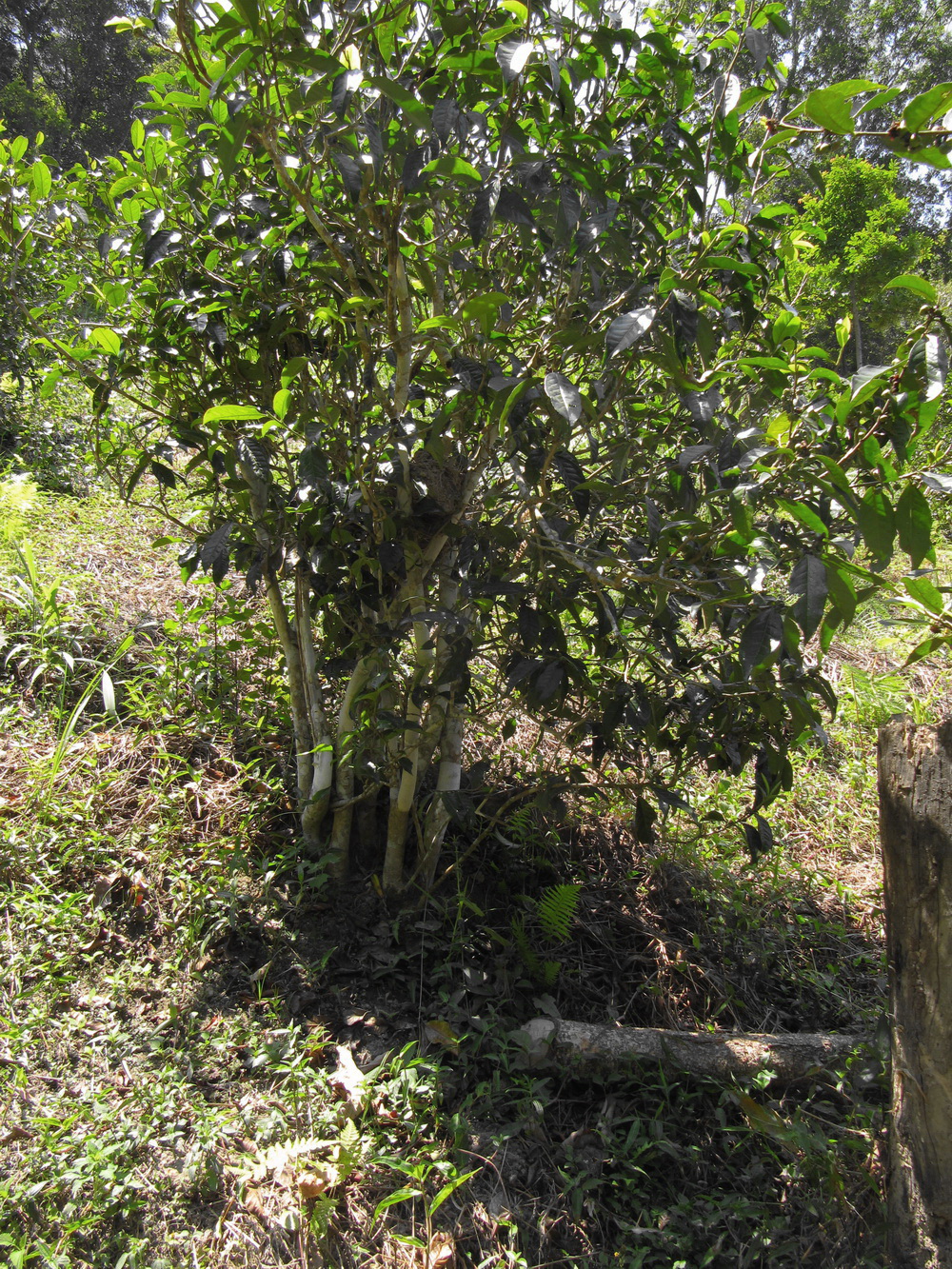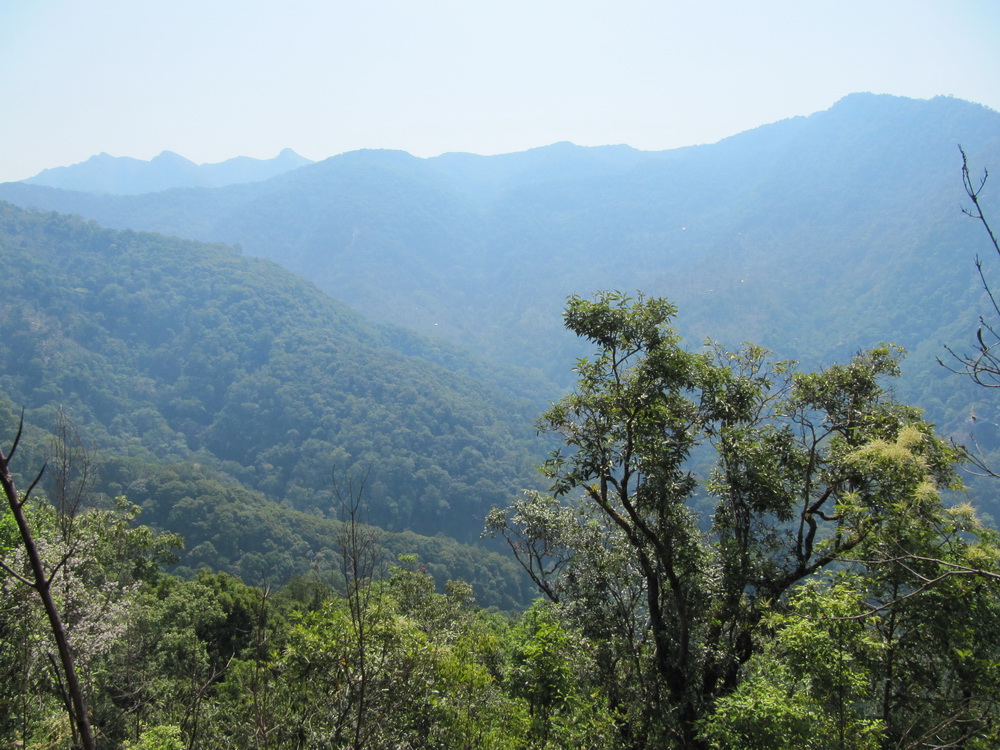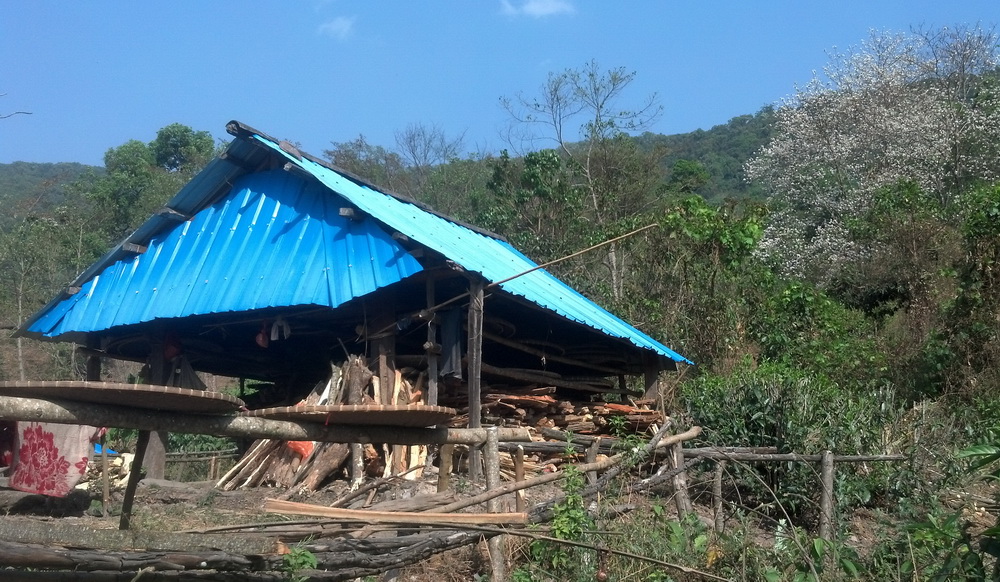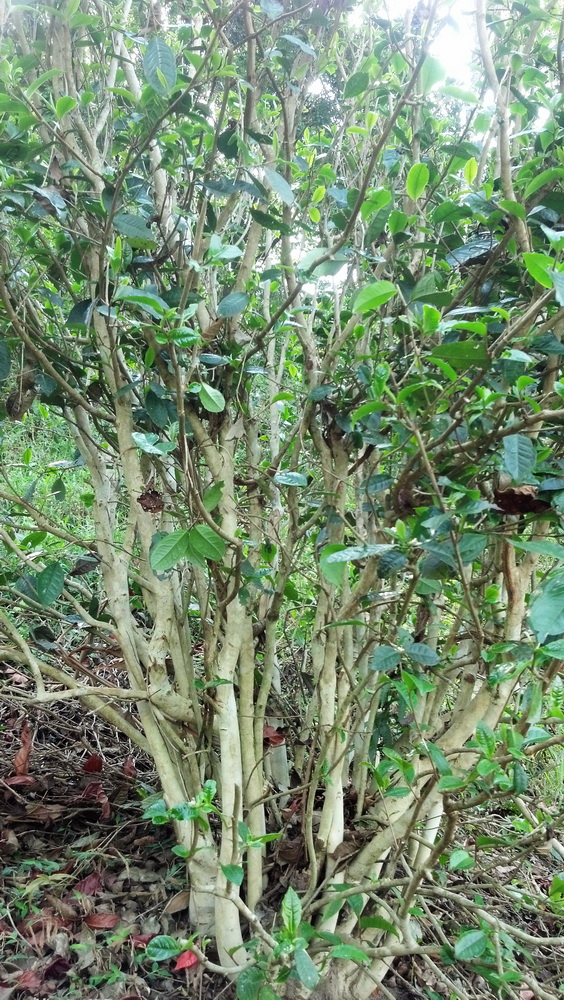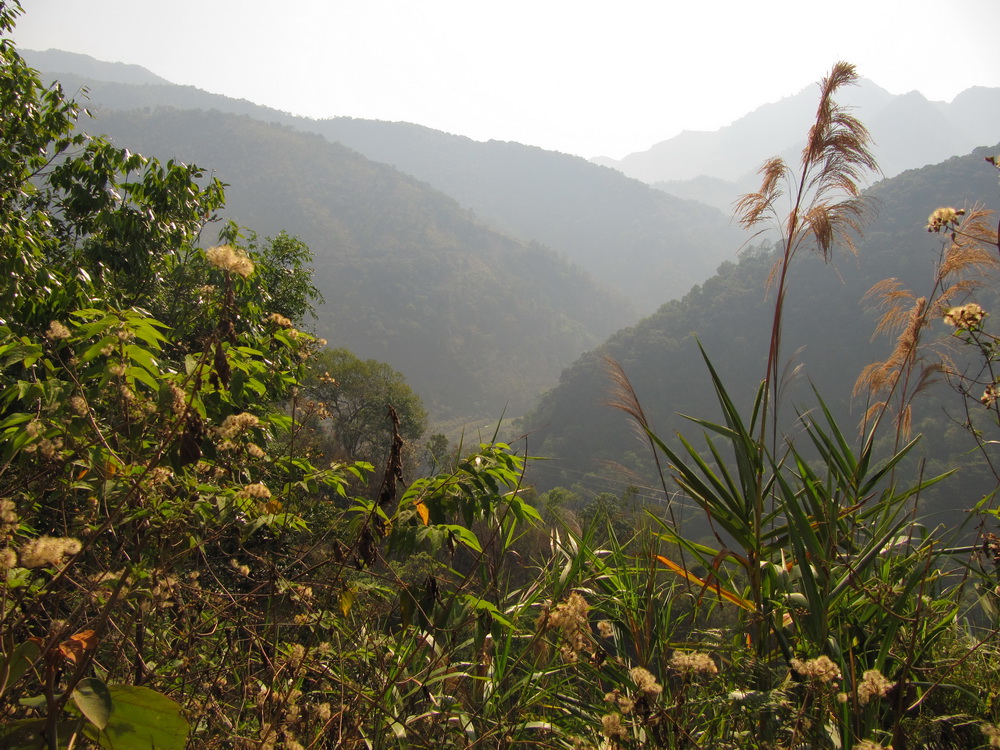There has been some stuff online in the last few months about Puer storage and humidity/temperature, so I thought it would be interesting to explore the issue a little. See the links at the bottom for reference.
The long dry spell here broke finally with a decent downpour. Prior to that, relative humidity (RH) had got as low as the fourties along with temperatures in the low thirties, which is exceptionally dry for Xishuangbanna.
Since then, in the last couple of weeks, the temperature has seen highs of 35°C and a low of just above 24°C. The relative humidity has been as high as 84% and as low as 44%. The highs and lows of temperature and humidity don’t of course necessarily coincide in that way; within the broader context of seasonal fluctuations, typically (here at least) humidity tends to drop as daily temperatures rise. Sitting in the shop now, at around mid-day, it is 30°C and 68% humidity.
These short term fluctuations have little impact on the ageing process of Puer tea. More long term, seasonal conditions are what is important.
You only need to tout your temperature/humidity guage around a little to realise a few things:
The first thing that is clear is that making assumptions based on generic weather record figures – assuming they somehow reflect the temperature and humidity inside one’s house, shop, or whatever – is of little value. It gives no more than a broad idea of what might be happening.
In Jinghong, where I can live with all my windows and doors open maybe 360 days of the year, there is a difference in both temperature and humidity between the inside of my apartment and the balcony (outside in the shade), and there is a further difference in a room where I have a little tea stored, to which the door is shut most of the time.
Anyone living in a climate where they are not afforded the luxury of the near ‘al’fresco’ experience that we are here, would be wise not to assume that what happens to the weather outside the house reflects too closely what happens inside.
There is also a significant difference in Jinghong between the ground floor and say the 5th or 6th: Most people in Jinghong will tell you that the ideal storage for tea is between the 2nd and 4th floors. The ground floor may be too damp, the higher floors tend to be dry.
Secondly, as MarshalN has said, it’s of questionable use to consider relative humidity without talking about the thing that it’s relative to. i.e. temperature.
Absolute humidity is the expression in g/m3 of the maximum mass of vapourised water (moisture) that a given mass of air can hold at a given temperature. RH is an expression, in percent (%), of the ratio of actual humidity to the absolute humidity.
Some dim recollection of schoolboy chemistry tells me that the more heat a volume of air contains, the more energy it has, so the faster the molecules are moving around. i.e. they are less likely to condense out and the air can consequently hold more water.
To make a couple of comparisons:
Air with a temperature of 30°C and an RH value of 70% – fairly typical for Jinghong – contains more than two times more moisture (21.36g/m3) than air at 15°C 70% RH – fairly typical of northern Europe – with an actual humidity of 9g/m3. What this means is that with the example given here, a cake of Puer tea in Jinghong would be exposed to twice as much moisture as one in say, the south of England.
Pushing the humidity without increasing temperature is not going to resolve this difference. You need both to achieve a decent Puer ageing environment.
Another example might be to compare Jinghong with say, Nan Nuo Shan, where temperatures are a good 5 to 10 degrees lower, but humidity – there is often mist in the mornings – can be high. So tea that is stored by tea farmers in sacks in their houses can often end up with a musty smell and not infrequently, obvious mould if kept there for extended periods.
It seems like dew point is perhaps a more useful measurement of humidty:
Dew point is the temperature to which air would have to drop, for a given absolute humidity, for moisture to condense out – as rain, mist etc.
The dew point in our first example with 30°C and an RH value of 70% would be 24°C and for the second, 9°C. Both are quite feasible, but assume that the amount of moisture in the air would remain constant as the temperature dropped. This is perhaps not likley, but even so, dew point gives a better indication of how ‘wet’ it is than RH does. i.e. how close to the dew point air temperature is.
What this suggests is that on a day in say northern Europe, during which the RH is 70%, if the temperature fell from 15 to 9°C, water would condense out of the air and on to or into something – like your Puer tea.
The fact that that doesn’t happen (hopefully) is because your home is likely not as cold, or humid, as it is outside.
The other thing that is important, is written on every Puer cake wrapper, but few people seem to talk about is airflow. This does not mean a draught. But there is a big difference between 30°C and 80%RH with a little air circulation, and the same temperature and RH with no air circulation.


